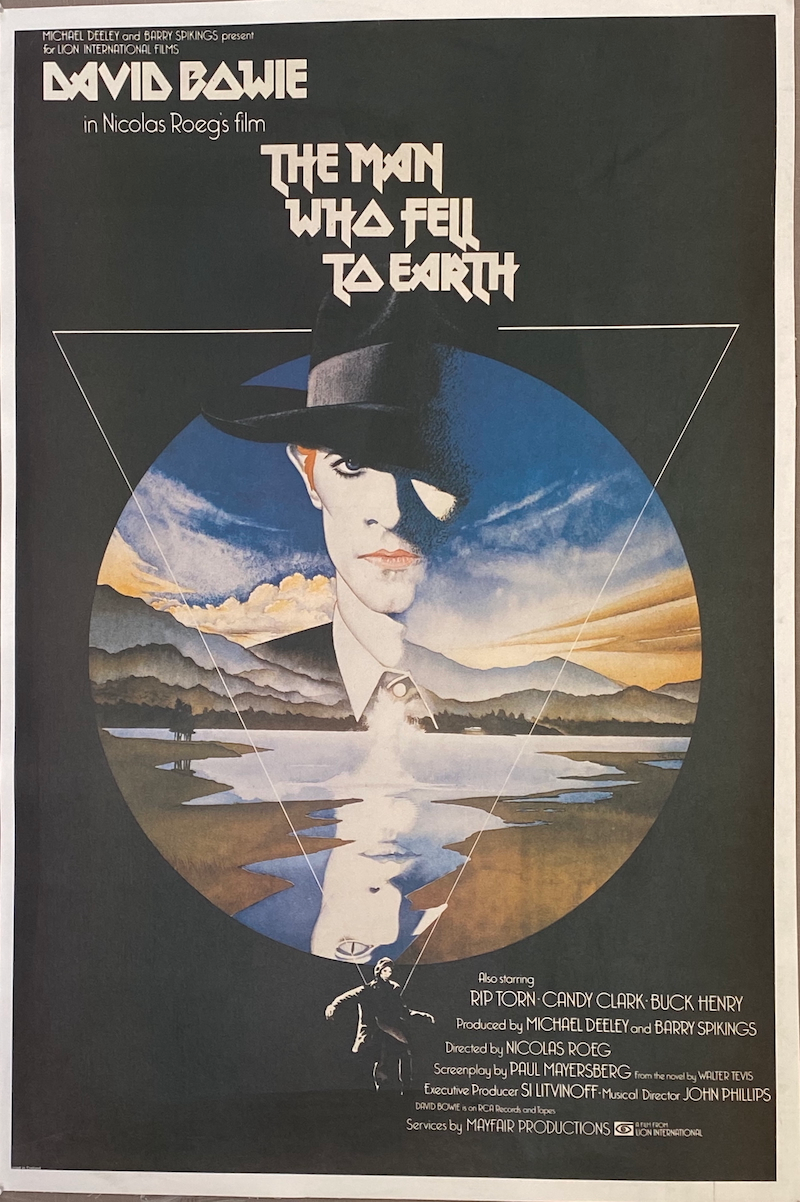David Bowie and Cinema
- Flicks Film Posters
- Sep 9
- 2 min read
Since we opened our shop in Twickenham we have better understood the area’s cultural history, not least of which is the town’s rich musical heritage. Visitors often ask whether we have any music-related posters. Although not our specialism, we have a few, and have restored many vintage music posters for our customers. Music posters are a growth area of the vintage poster hobby.
While there are no widely documented major gigs by the late, great David Bowie in Twickenham, his early performances in nearby locations like Eel Pie Island contribute to the area’s musical legacy. So let’s look at a few film posters and two films that showcase Bowie’s crossover into the cinematic arts.
Perhaps the best movie poster featuring Bowie is for Nicolas Roeg’s cult 1976 sci-fi, The Man Who Fell to Earth. The stunning artwork on this English one-sheet poster is by Vic Fair and is valued highly amongst collectors. It’s also very different to the style and imagery on the US release poster, which also has a great image of Bowie, but with no accompanying info about the film itself. Bowie was enough!
As the enigmatic alien Thomas Jerome Newton, who crash-lands on Earth seeking a way to ship water to his planet, Bowie was perfectly cast. Instead of finding a solution to the problems on his own planet, Newton is inexorably drawn into a web of encounters that leave him at the mercy of human vices and corruption on Earth.


Nagisa Oshima’s 1983 film, Merry Christmas Mr. Lawrence, featured another of Bowie’s best screen roles. With a superb music score by Ryuichi Sakamoto underpinning the action, this fascinating Japanese WW2 POW drama also featured Tom Conti, and an early role for another favourite of ours— Japanese writer-director-actor-comedian ‘Beat’ Takeshi Kitano, later a cult film director in his own right (e.g. Violent Cop, Sonatine, Hana-Bi).
We have a rare printer’s proof for Lawrence signed by poster artist Bryan Bysouth in our collection. The striking artwork on this poster was likely considered too strong an image and was never used. By the way, it’s the back of Bowie’s head we see buried in the sand! The contrast with the official release poster (by a different artist) is stark. Maybe Bysouth’s pacifist imagery (a string of flowers in barbed wire) was too subtle for the Hollywood backers of Oshima’s first English-language movie. They likely also wanted a clearly identifiable image of David Bowie on the poster, and there’s certainly nothing wrong with that thinking…








Comments